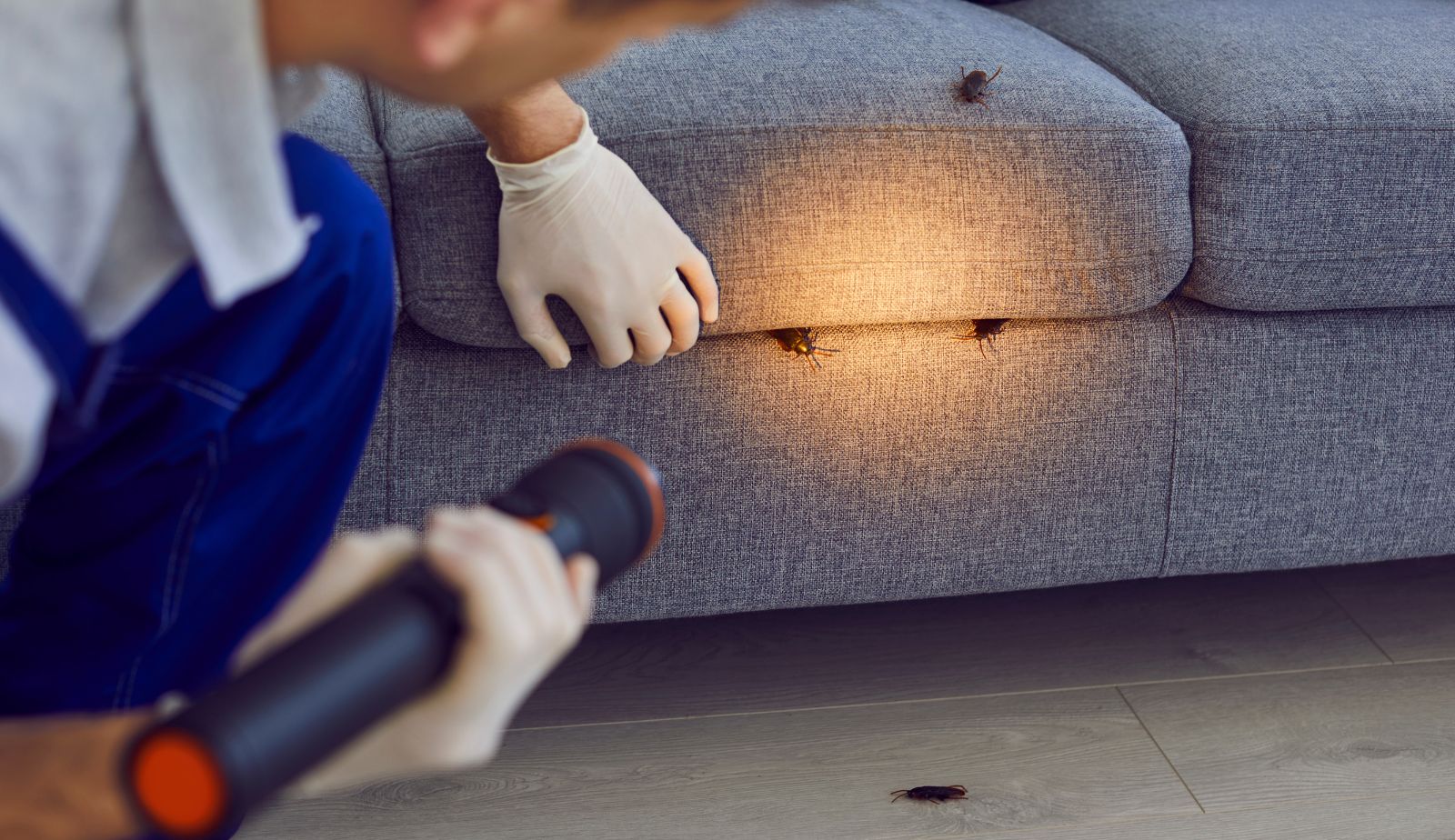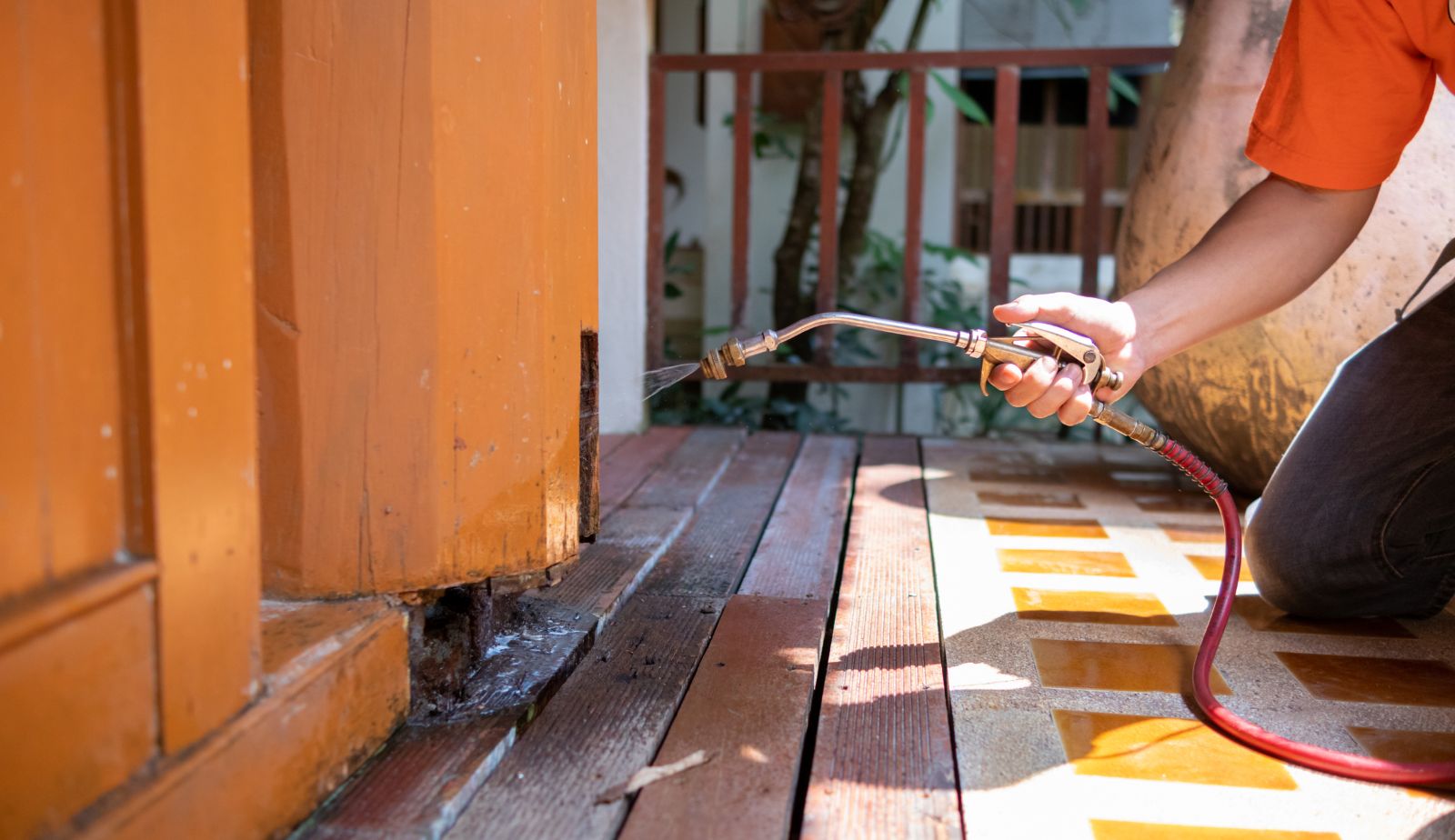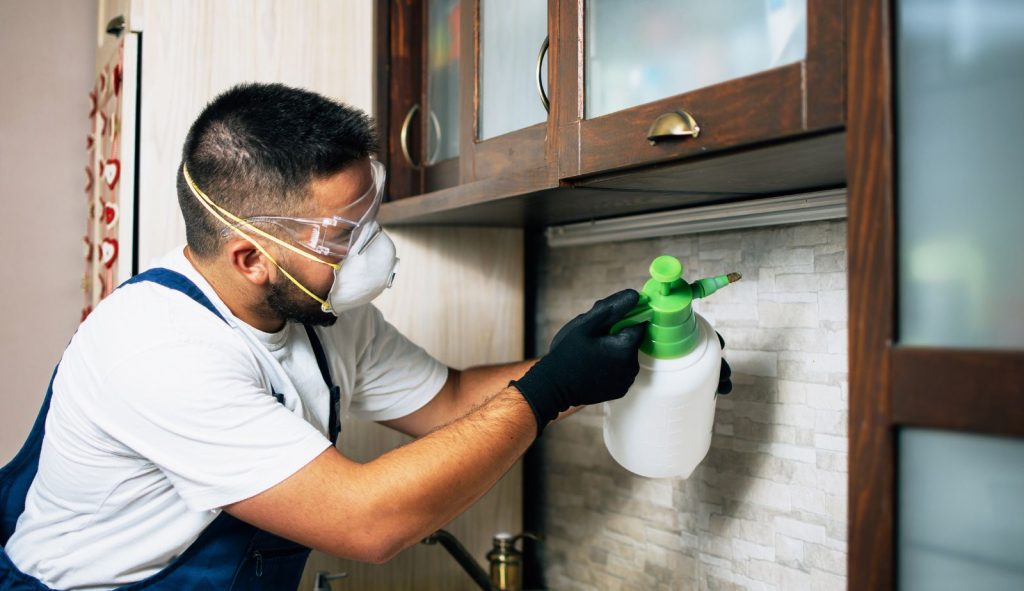When homeowners discover unwanted pests, they typically need immediate solutions. They’ll quickly search online using whatever device is readily available – most commonly a smartphone. If a pest control website loads slowly, displays awkwardly, or functions poorly on mobile screens, users will simply move on to a competitor with a better online experience.
Mobile-friendly design isn’t just about appearances; it directly impacts a pest control company’s bottom line. A well-optimized mobile website ensures faster loading times, easier navigation, and a seamless user experience that converts visitors into customers. This improved accessibility helps pest control businesses capture emergency service requests and planned treatments alike, ultimately making the difference between gaining clients or losing them to competitors.
The Importance of Mobile Responsiveness in the Digital Age
In today’s connected world, having a mobile-responsive website is no longer optional for pest control companies. Mobile optimization directly affects how potential customers find, interact with, and ultimately choose your services.
Understanding Mobile Responsiveness
Mobile responsiveness refers to a website’s ability to automatically adjust its layout and content to fit different screen sizes and devices. A truly responsive website provides optimal viewing experience across smartphones, tablets, and desktop computers without requiring users to pinch, zoom, or scroll horizontally.
For pest control businesses, this means your contact information, service details, and emergency options must be easily accessible on any device. Mobile-friendly websites automatically resize images, adjust menu navigation, and reformat text blocks to ensure everything displays properly.
Key components of a mobile-responsive pest control website include:
- Touch-friendly buttons large enough for fingertip navigation
- Fast-loading pages optimized for mobile data connections
- Simplified forms that are easy to complete on small screens
- Click-to-call functionality for immediate service requests
The Impact on User Experience and Bounce Rate
User experience on mobile devices directly influences potential customers’ decisions. When homeowners discover a pest problem, they often search for solutions immediately on the nearest device—typically their smartphone.
If your pest control website fails to load properly on mobile, visitors will likely leave before engaging with your content. This rapid departure is measured as “bounce rate”—a critical metric that affects both customer acquisition and search engine rankings.
Studies show that 36% of users report wasting their time when visiting non-responsive sites, and they’re less likely to use businesses with poor mobile experiences. For pest control companies, this translates to lost emergency calls and service opportunities.
A mobile-friendly interface increases the likelihood that visitors will:
- Stay on your site longer
- Call for immediate service
- Request a quote or schedule an appointment
- Return to your site when future pest issues arise
Mobile versus Desktop Usage Trends
The shift toward mobile browsing continues to accelerate, with significant implications for pest control marketing strategies. More people now search for local services on their phones than on desktop computers.
Recent data indicates that mobile internet usage continues to rise, making mobile optimization essential for staying competitive. This trend is particularly relevant for emergency services like pest control, where customers need immediate solutions.
When pest problems occur, consumers typically:
- Search on their mobile device for “pest control near me”
- Compare the top 3-5 results that appear
- Choose services based on which website provides the easiest access to information
Google prioritizes mobile-friendly websites in search rankings, meaning pest control companies with responsive designs are more likely to appear at the top of local search results—precisely when potential customers need them most.
Designing a Pest Control Website for Mobile Devices

Creating a mobile-friendly website for your pest control business ensures potential customers can easily access your services regardless of their device. A properly designed mobile site prioritizes quick loading times and intuitive navigation to capture leads when they need pest solutions most urgently.
Responsive Layout Essentials
A responsive pest control website design automatically adjusts to fit any screen size, providing an optimal viewing experience. This adaptability is crucial since more than 50% of website queries now happen on mobile devices.
The navigation menu should be simplified for mobile users. Consider implementing a hamburger menu that expands when tapped to save screen space while maintaining all important navigation options.
Key elements to include at the top of mobile pages:
- ZIP code or location finder
- Prominent “Call Now” button
- Emergency service information
Place critical conversion elements like contact forms within the first screen view (“above the fold”). This makes it easy for customers to request service without excessive scrolling.
High-Quality Images and Readability on Small Screens
Mobile screens demand user-friendly designs with carefully selected visuals. Use high-quality, compressed images of pest control technicians in action or before/after treatment results that load quickly on mobile connections.
Font sizes should be a minimum of 16px to ensure readability without zooming. Implement adequate spacing between clickable elements (buttons, links, menu items) to prevent frustrating tap errors.
Color contrast matters: Dark text on light backgrounds (or vice versa) improves readability in various lighting conditions when customers view your site outdoors.
Avoid large blocks of text. Break content into scannable sections with descriptive subheadings and bullet points highlighting your pest control services and benefits.
Forms should be simplified for mobile users with minimal required fields and large, finger-friendly input areas to capture leads efficiently.
SEO Advantages for Mobile-Friendly Pest Control Websites
A mobile-optimized pest control website significantly enhances search performance through both local and technical SEO factors. The mobile experience directly impacts rankings while proper keyword implementation captures targeted traffic.
Harnessing Local SEO and Google My Business
Mobile users frequently search for pest control services while on the go, making local SEO crucial for capturing these potential customers. Mobile optimization ensures quick loading times, a factor Google prioritizes in its rankings for local businesses.
Google My Business integration becomes more effective with a mobile-friendly website. When customers find a pest control company through local search, they expect to navigate the website easily on their phones.
Local search queries like “pest control near me” are predominantly made on mobile devices. Companies with responsive websites appear higher in these results as Google favors mobile-friendly sites in local rankings.
Key local SEO tactics for pest control companies:
- Consistent NAP (Name, Address, Phone) information
- Location-specific service pages
- Mobile-optimized Google Maps integration
- Local customer reviews display
Keyword Research and Mobile Targeting
Mobile search queries often differ from desktop searches, making specialized keyword research essential for pest control companies. Mobile users tend to use shorter, more urgent phrases like “ant exterminator now” rather than longer research-based queries.
Implementing responsive web design allows pest control websites to adapt content presentation based on device type without changing the underlying keyword strategy. This maintains SEO value across platforms.
Voice search optimization becomes increasingly important as mobile users utilize this function. Pest control companies should incorporate natural language patterns into their keyword strategy to capture these searches.
Effective mobile keyword targeting includes:
- Location-specific service terms
- Emergency-related phrases
- Question formats for voice search
- Service-specific terms with local modifiers
Website analytics should track mobile conversion rates separately to refine keywords that drive actual business. This approach helps pest control companies attract qualified leads through precisely targeted mobile content.
Building Trust and Credibility with a Professional Website
Your pest control website serves as a digital storefront that’s open 24/7. A professional, clean design communicates expertise and reliability to potential customers who are looking for someone they can trust with their pest problems.
Customer Reviews and Testimonials
Trust signals are essential elements for establishing credibility on any pest control website. Customer reviews and testimonials provide social proof that your services are effective and reliable. These elements are particularly important in the pest control industry, where safety and efficacy are primary concerns for customers.
Displaying genuine reviews from satisfied customers helps potential clients see the real-world impact of your services. Consider implementing the following trust elements:
- Star ratings prominently displayed on your homepage
- Detailed testimonials with customer names and locations
- Before-and-after photos (where appropriate)
- Video testimonials for maximum impact
Third-party review platforms like Google Reviews or Yelp can further validate your reputation. Integration of these reviews directly on your website creates transparency and builds confidence in your services.
Clear Contact Information and Online Booking Features
A user-friendly website design must include easily accessible contact information and convenient booking options. Customers experiencing pest issues often need immediate assistance and will quickly move to a competitor if they can’t easily reach you.
Effective contact and booking elements include:
- Phone number visible on every page (ideally in the header)
- Contact forms that require minimal information
- Live chat functionality for immediate assistance
- Online scheduling tools that show available appointment times
- Multiple contact methods (phone, email, text)
The ability to book services online is increasingly important as customers expect convenience. A mobile-friendly booking system allows customers to schedule appointments any time, even outside business hours, which can significantly increase conversions and customer satisfaction.
Conversion Optimization for Pest Control Service Websites

Optimizing your pest control website for conversions requires strategic design elements and clear messaging that compels visitors to take action. Conversion Rate Optimization (CRO) transforms casual visitors into valuable leads through targeted techniques specific to the pest control industry.
Effective Calls to Action
Strong calls-to-action (CTAs) serve as critical conversion points on pest control websites. These prompts should be prominent, using contrasting colors and action-oriented language like “Get a Free Inspection” or “Eliminate Pests Today.”
Pest control companies should test different CTA elements including button designs, placement, and messaging to identify what resonates best with their audience. The most effective CTAs address urgent pest problems directly.
For emergency services, position CTAs prominently in the header and sidebar areas where they remain visible throughout the browsing experience. Including phone numbers with text like “Call Now for Same-Day Service” creates immediacy.
Multiple CTAs should be strategically placed throughout the website—especially following compelling service descriptions or testimonials where visitors are most likely to convert.
Service Offerings and Unique Selling Points
Clearly communicating service offerings helps visitors quickly determine if a pest control company meets their needs. Create concise service categories with brief descriptions of treatment methods and target pests.
Highlight unique selling points that differentiate the business from competitors:
- Eco-friendly treatment options
- Same-day or emergency services
- Service guarantees or warranties
- Specialized expertise (termites, bed bugs, etc.)
- Licensed and certified technicians
Pricing transparency builds trust, even if it’s just showing starting rates or package options. According to research, presenting pricing clearly can significantly improve conversion rates for pest control services.
Include social proof elements near service descriptions, such as customer testimonials or success stories that reinforce the effectiveness of treatments. These elements work best when they address specific pest problems that potential customers can relate to.
Content Is King: Engaging Users with Quality Information
In the pest control industry, providing valuable information through your website establishes credibility and keeps potential customers engaged. Quality content not only improves your search engine rankings but also positions your company as a trusted authority in pest management.
Creating Engaging and Relevant Content
Engaging content is what keeps visitors on your pest control website and encourages them to convert into customers. Focus on addressing common pest concerns that homeowners and businesses face in your service area. Create seasonal content that anticipates customer needs, such as mosquito prevention in summer or rodent control in winter.
Consider these effective content formats:
- Educational blog posts about pest identification and prevention
- How-to guides for DIY initial treatments
- FAQ sections addressing common pest control questions
- Infographics showing pest life cycles or infestation warning signs
Short, scannable content works best for mobile users. Break information into digestible chunks with clear headings and bullet points to improve readability on smaller screens.
Showcasing Expertise in the Pest Control Industry
Demonstrating your expertise builds trustworthiness and converts website visitors into paying customers. Share detailed case studies of successful pest management solutions you’ve implemented. Include before-and-after scenarios that illustrate your effective pest control services.
Content that showcases your expertise might include:
- Technical information about pest biology and behavior
- Industry certifications and specialized training
- Local pest knowledge specific to your service area
- Environmentally responsible treatment approaches
Creating in-depth content on specific pests like cockroach infestations or termite prevention positions your company as an authority. Consider developing comprehensive guides (2,500-5,000 words) on major pest issues alongside shorter, mobile-friendly articles for quick reference.
Leveraging Digital Marketing for Your Pest Control Company

Digital marketing offers powerful tools for pest control businesses to connect with potential customers and showcase their expertise. These approaches extend your reach beyond traditional advertising methods while providing measurable results.
Strategies for a Comprehensive Online Presence
A strong search engine optimization strategy ensures your pest control company appears prominently when potential customers search for pest management solutions. This requires optimizing your website with relevant keywords and creating quality content that addresses common pest problems.
Mobile marketing is essential for connecting with customers in real-time. Text messages, push notifications, and social media platforms create seamless experiences that drive revenue growth.
Pay-per-click (PPC) advertising should be part of any pest control company’s online strategy. These targeted ads appear when potential customers search for specific pest-related terms, driving immediate traffic to your website.
Content marketing builds authority in your field. Regular blog posts about seasonal pest issues, prevention tips, and treatment methods position your company as the local expert.
Utilizing Customer Testimonials and Case Studies
Happy customers provide the most convincing marketing for pest control services. Real testimonials addressing specific pest problems and their successful resolution build trust with potential clients who face similar issues.
Before-and-after case studies demonstrate your effectiveness visually. Photos showing severe infestations compared to the clean results after treatment prove your company’s capabilities better than any sales copy.
Video testimonials create an emotional connection. Seeing and hearing satisfied customers describe how your company solved their pest problems makes a powerful impression on prospective clients considering their options.
Testimonials should highlight specific benefits like:
- Fast response times
- Thorough treatment methods
- Professional technician behavior
- Long-lasting results
Including these authentic voices in your digital marketing efforts creates lasting customer relationships and helps your pest control business stand out from competitors.
Measuring Success: Analytics and User Feedback
Effective measurement strategies help pest control companies understand website performance and continuously improve the customer experience. Data-driven insights combined with direct customer feedback create the foundation for ongoing website optimization.
Understanding Website Analytics
Web analytics provide pest control businesses with crucial insights into their online performance. By tracking metrics like visitor numbers, bounce rates, and conversion rates, companies can identify which marketing channels drive the most qualified leads.
Google Analytics and similar tools reveal which pages attract visitors and which ones cause them to leave. This data helps identify if your site is effectively communicating service offerings or if potential customers are encountering obstacles.
For pest control companies, tracking local search performance is particularly valuable. Monitoring how many visitors find the website through “pest control near me” searches helps evaluate local SEO effectiveness.
A user-friendly website with mobile responsiveness typically shows longer session durations and higher conversion rates. Analytics can confirm if mobile visitors successfully navigate the site or encounter usability issues.
Collecting and Acting on User Feedback
Direct feedback from website visitors provides invaluable insights that analytics alone cannot capture. Customer surveys, feedback forms, and comment sections help pest control companies understand specific pain points and improvement opportunities.
Monitoring online reviews on platforms like Google Business Profile and Yelp offers additional perspective on customer satisfaction. Companies should track their Customer Satisfaction Score (CSAT) to gauge service quality perception.
Implementing changes based on user feedback demonstrates customer-centricity and builds trust. For example, if multiple customers mention difficulty finding contact information, this area should be prioritized for improvement.
A/B testing different website elements (such as call-to-action buttons, form lengths, or service descriptions) helps determine which options resonate best with visitors. These tests should be guided by both analytics data and customer feedback.
